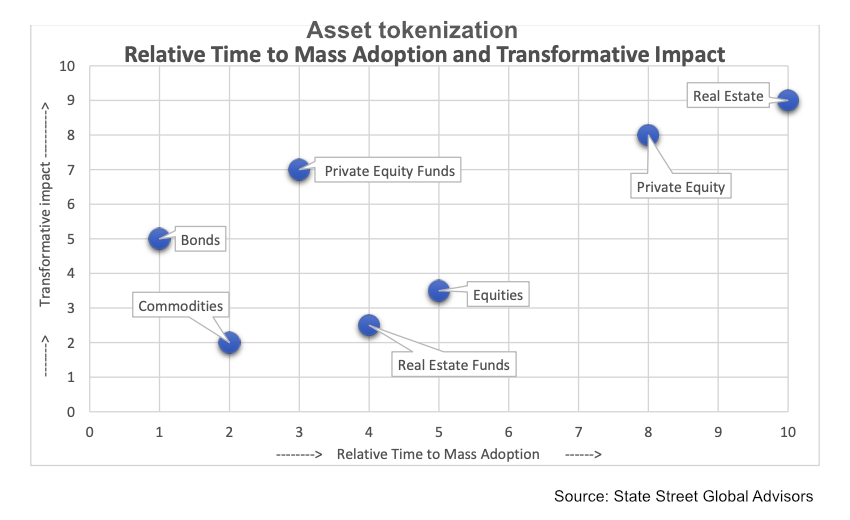State Street Global Advisors (SSGA), the asset management arm of State Street, has released a report assessing the relative merits of tokenization for various asset classes. SSGA has $4.4 trillion in assets under management.
The company is bullish on the concept of tokenization, noting that it can make markets “faster, cheaper, more transparent, and more accessible.” However, they argue that it will take time to reap the full benefits as it requires building an entire ecosystem.
Its construction itself would address many of the current barriers. Other frictions, such as legal issues and bureaucracy such as the old land registry, would be eliminated.
However, SSGA highlights that some barriers will be more difficult. While there is a vision of a large global pool of retail investors, the reality is that they live in different jurisdictions and must comply with AML and KYC (which can be country-specific). Additionally, access to certain asset classes such as private equity and credit funds will continue to be limited as they are too risky for the average investor to have significant exposure to.
We agree with that, but there are a lot of wealthy people out there. In fact, the authors cite a Bain & Company paper that emphasizes that only a small percentage of alternative investments are owned by individuals rather than institutions.
Which asset class comes first?
The authors explore several asset classes including fixed income, commodities, stocks, alternatives, and real estate. They didn’t commit to a time frame for how long traction would take (no mention of “years” on the X-axis of the chart). Instead, we plotted the expected relative progress for each asset class.
Fixed income is already the largest tokenized asset class and is envisioned as offering the most short-term returns, followed by commodities, private equity and credit funds.
The paper rightly points out that many previous digital bond issuances had other motivations than cost and speed. Sovereign issuers are keen to act as leaders and demonstrate. Financial institution issuers are gaining traction in a new competitive market. Also, some companies, such as Hitachi, have other drivers, such as sustainability.
It can be seen that corporate bond issuance by large companies is quite low. The most notable issuer is Siemens, which was also an early adopter of JP Morgan’s JPM Coin for DLT payments. Some might argue that there is another motive here: wanting to be seen as cutting edge.
real estate
At the other end of the spectrum, this paper considers the tokenization of real estate. The company believes that tokenization of real estate funds will continue in the medium term, but may be exposed to competition from existing real estate investment trusts (REITs). Because of this existing accessibility, the relative benefits are much lower compared to alternative asset classes such as private equity, which currently have very limited access.
We assume that tokenization of individual residential properties will take the longest to reach scale, although there are several existing projects. Part of the reason for this is the need to clarify the legal issues surrounding fractional home ownership (although many current projects utilize companies or trusts). I would also add that real estate is an area that requires stronger investor protection as it attracts fraudsters.
Meanwhile, State Street’s digital assets division is preparing digital bonds, tokenizing money market funds as collateral.
I will add a link as soon as I receive the report.



